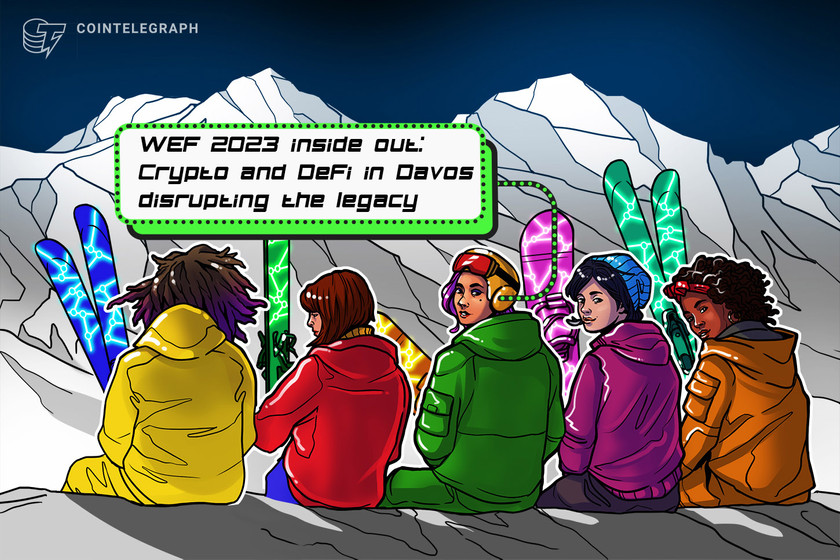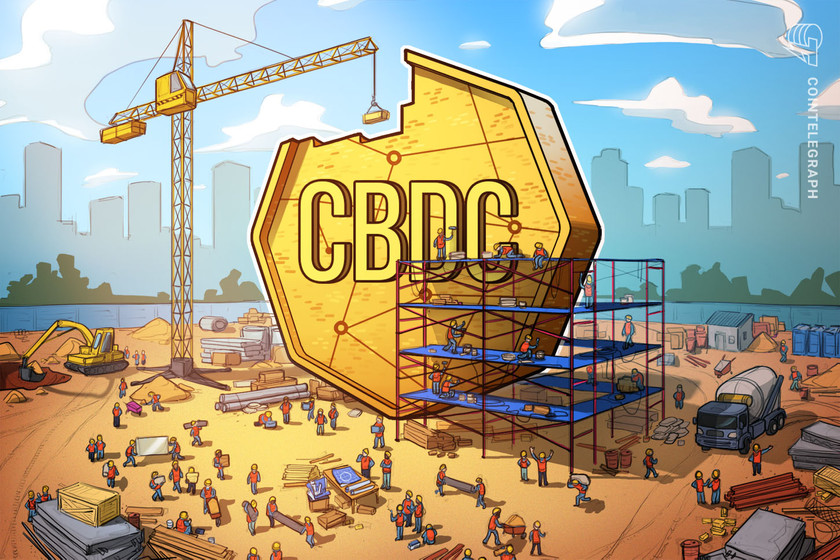Takeaways from Davos: Blockchain is changing the way we fight for sustainability


Evercity’s Alexey Shadrin shares his insights from last month’s World Economic Forum in Davos.
The Conference of Parties (COP) of the United Nations Framework Convention on Climate Change unites around 40,000 people from 196 countries. Governments, international institutions, financiers, businesses, non-governmental organizations and native communities gather for a two-week sprint to discuss the measures to tackle the climate crisis. The famous 17 United Nations Sustainable Development Goals were also first introduced at COP21 in Paris along with the historic Paris Agreement. It is aimed at limiting global warming to below 2 degrees Celsius above pre-industrial levels, with an aim to limit it to 1.5 degrees (most likely already achieved according to most evaluations).
The COP has also created tools to prevent climate doomsday. Such economic tools as voluntary and compliance carbon markets, carbon credits, green bonds and other green assets tied to positive environmental impact play a crucial role in decarbonization global efforts. However, they are often inaccessible to small and medium-sized companies from developing countries. The main reasons are high upfront costs and complex structuring processes in line with global green standards.
Positive and negative impacts on the environment have to be forecasted and described according to approved methodologies. This information is used for the future monitoring and reporting and is verified by assurance providers. That’s where greenwashing or deceptive eco-claims may occur. On-chain verification brings data immutability and transparency, stimulating issuers to meet their green commitments.
12% of carbon offsets and the birth of ReFi
It is an open secret that the issuance of green finance instruments has long been monopolized by the Web2 financial infrastructure players, such as banks, exchanges, registries and standards. So, it is no surprise that Web3 is bringing the most disruption at this stage.
The most obvious Web3 use case in green finance is the transfer of assets from traditional centralized registries to the blockchain via fungible or nonfungible tokens (NFTs). The tokenization of carbon credits pioneered by DAO IPCI in 2017 and scaled by Toucan and Klima DAO in 2021 led to the retirement of 20 million tons of CO2 — almost 12% of the annual voluntary carbon market retirement volume. As a protective move, leading carbon standards immediately banned tokenization. This initiated an ongoing public discussion and highlighted the need for a wider approach than increasing liquidity.
Related: What Goldman Sachs’ CEO misunderstands about private blockchains
Such an approach, initially described by the timelessly passed DAO IPCI founder Anton Galenovich, is now being implemented by a new generation of infrastructure solutions. One of them is Guardian, an open-source tool that provides auditable, traceable, reproducible records that document emissions and the lifecycle of green assets. It provides a low-code environment to instantly launch new apps, asset types and even standards. The blockchain-based infrastructure has overall proven to be faster, more cost-efficient and transparent. This is crucial for unlocking green finance for small and medium-sized enterprises and eliminating greenwashing.
Web3 also offers the opportunity to develop innovative instruments that boost the liquidity of previously illiquid assets or merge the strengths of multiple instruments. Take, for instance, carbon-linked bonds. They unite the features of green bonds and carbon credits, giving green bond investors more incentives and allowing issuers to get lower coupon rates. Biodiversity credits value ecosystem services, and my own Evercity’s “carbon forwards” enable financing for early-stage carbon projects ahead of issuing actual carbon credits. There are already Web3 exchanges, decentralized autonomous organizations (DAOs) and liquidity pools, such as Solid World, that deal with such assets.
The combination of blockchain technology with monitoring tools, such as the Internet of Things and satellites, can provide further transparency and traceability of impact reporting along the green finance value chain. All of the abovementioned use cases have already started to make a significant impact on the attainment of the Paris Agreement and U.N. Sustainable Development Goals. The companies behind them consider themselves part of the growing Regenerative Finance (ReFi) community.
Convergence of Web3 and carbon markets
In 2017, Glocha and DAO IPCI, which executed the world’s first voluntary carbon credit transaction, introduced a blockchain booth at the COP. The Climate Change Coalition was formed with support from the UNFCCC Secretariat to unite blockchain pioneers, who back then faced a lot of skepticism from traditional players amid the initial coin offering wave. Five years later, the picture had changed dramatically — COP27 in Egypt marked the convergence of the green finance and Web3 worlds.
With national states falling short of their climate responsibilities, new players have stepped up. The sunny Sharm El Sheikh featured a record number of Web3 companies. The United Nations Global Innovation Hub was at the center of all the climate tech talks, featuring high-level speakers and crucial topics. The Web3 agenda was also featured at the Singapore pavilion, International Emissions Trading Association, Climate Chain Coalition, the Gulf Organisation for Research & Development and several others. At dinner parties and hotel conferences, like the one organized by the Hubculture, Hedera and the HBAR Foundation, carbon market veterans mixed with the Web3 crowd. What should be a more solid sign of industry adoption?


Two of the most important carbon market standards, Verra and Gold Standard, were featured at blockchain events, but no official statements regarding tokenization were made. At the same time, some of the carbon-market veterans have already adopted Web3, with AirCarbon exchange, Climate Trade, Climate Check and Ecoregistry leading the way.
This COP also marked Africa’s growing openness to carbon markets and climate finance, as the continent seeks financing and technologies that foster sustainable, independent growth. But the key elements of infrastructure need to be deployed first. Web3 and its open-source part offer such an inclusive, decentralized infrastructure with peer-to-peer payments and transparency that build trust between green issuers and investors.
Regenerative finance is among the hottest WEF trends
Being annually held at a fancy ski resort in the most expensive country, the World Economic Forum (WEF) is the opposite of the COP in many ways, but foremost in inclusivity. While the COP always changes its host country, the WEF stays in the snowy Davos fortress. The outside temperature this year was around -17 celsius, but the hotel prices were even more extreme. A lack of snow highlighted that climate change is indifferent to wealth and status.
Access to the WEF event zone was restricted to politicians, business leaders and friends of the organization, and one had to have a badge to enter. The outside stakeholders gathered at hotel conferences and the Promenade, a street lined with boutiques that were transformed into promotion spaces, also known as Houses. The Houses were mainly occupied by corporations, blockchain companies and countries, such as India, Indonesia and Saudi Arabia, which wanted to promote themselves on the international stage.


The main topics of discussion at the WEF were the economic downturn, geopolitical issues, sustainability and Web3. The intersection of the last two was among the top trends. In September 2022, the WEF launched the Crypto Sustainability Coalition aimed to investigate how Web3 and blockchain tools could be utilized to achieve positive climate action. The working group meetings on carbon credits and climate action were held among other thematic events.
The key Web3 Houses included Global Blockchain Business Council, Hedera, the Blockchain Hub Davos and a creative ReFi space featuring digital art. Apart from the ReFi project, these events featured speakers, including someone from the Commodity Futures Trading Commission, Will.i.am and Naomi Campbell. Each day ended with late-night parties, where attendees had the opportunity to mingle with high-level individuals and investors from around the world.
What’s coming in 2023?
Web3 companies had the strongest ever showing at both the COP and WEF events, showcasing solid use cases with broad global support. Climate and Web3 were among the hottest topics, with the ReFi sector on the rise. 2023 and beyond promise continued growth for this trend, with the potential to become the blockchain space’s leading focus. The industry awaits guidance from carbon standards and regulations to drive the market, but there are also untapped opportunities in topics beyond climate, such as biodiversity.
Related: 5 tips for investing during a global recession
Web3-native standards and infrastructure, such as Guardian, are coming soon and are poised to shake up the market landscape. Established players must act quickly to stay relevant. Adoption is fully underway, with developing regions, including Africa, ideally positioned to get the most benefits from Web3’s sustainable solutions.
The Conference of Parties (COP) of the United Nations Framework Convention on Climate Change unites around 40,000 people from 196 countries. Governments, international institutions, financiers, businesses, non-governmental organizations and native communities gather for a two-week sprint to discuss the measures to tackle the climate crisis. The famous 17 United Nations Sustainable Development Goals were also first introduced at COP21 in Paris along with the historic Paris Agreement. It is aimed at limiting global warming to below 2 degrees Celsius above pre-industrial levels, with an aim to limit it to 1.5 degrees (most likely already achieved according to most evaluations).
This article is for general information purposes and is not intended to be and should not be taken as legal or investment advice. The views, thoughts and opinions expressed here are the author’s alone and do not necessarily reflect or represent the views and opinions of Cointelegraph.


























